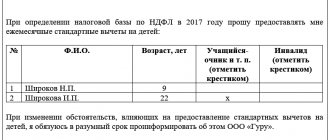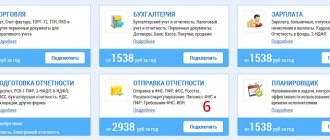The concept of the tax system of the Russian Federation
The tax system in the Russian Federation refers to fees, duties and other various payments that are collected in accordance with the established procedure from taxpayers. The procedure for collection and payment is determined by the Tax Code of the Russian Federation.
Tax includes a huge number of fees, including excise taxes, VAT, and personal income tax. Thanks to the withdrawal of taxes, a budget is formed, and funds are available for the state to fulfill its direct responsibilities.
Structure
Based on the provisions of the previous paragraph, it is easy to establish a three-level composition of the tax system of the Russian Federation. It corresponds to the hierarchy of legislative acts in the Russian Federation. The tax system of the Russian Federation consists of levels: federal, regional, local and includes all types of mandatory payments.
Below is the structure of the tax system of the Russian Federation: the scheme includes all mandatory payments currently established in the country.
The legislation on obligatory payments of the Russian Federation and its principles are constantly criticized by the opposition and business representatives for the lack of proper structuring and the possibility of double and even triple taxation. The state periodically reforms laws in this area, but the main hierarchy of payments to the budget remains unchanged, since it is determined by the state structure.
Legal documents
- Tax Code of the Russian Federation
Legislative regulation
Everything related to taxation and withdrawal of duties is regulated by the Tax Code. Articles of the Tax Code of the Russian Federation define regional, federal and local taxes, as well as special tax regimes in the country. The code also regulates inspections of individuals and legal entities for the payment of taxes. Checks are carried out by the Federal Tax Service.
The Federal Tax Service, based on the norms enshrined in the Tax Code of the Russian Federation, ensures that taxes are accrued and paid correctly and on time, keeps records of taxpayers, and also monitors the implementation of current legislation.
Important! Taxes are established by the current code, as well as other acts, among which are Federal Laws and government regulations.
Russian tax system: briefly about the elements
Efficiency is determined not only by its structure, but also by its constituent elements. The following elements are distinguished:
- types of taxes, fees, contributions (from 2021) and other payments;
- rights and obligations of taxpayers and government agencies;
- a set of methods and types of control;
- introduction of liability for violations of fiscal norms;
- principles and justifications for establishing fiscal payments;
- established appeal procedure.
Despite the numerous elements, the basis for the functioning of the Tax system of the Russian Federation is its legal framework, namely the Tax Code.
NS structure
Russia uses a three-tier system, which consists of different types of tax levies. This option has its advantages and disadvantages. Each level of the neural network partially consists of unique elements. The budget into which it will be subsequently credited depends on the level of the tax.
The structure includes tax fees, insurance premiums, taxable entities, government bodies that work in the field of finance and taxation, as well as the legal framework.
Federal
Federal taxes include the following:
- VAT;
- excise taxes;
- state duty;
- corporate income tax;
- Personal income tax.
The funds received are sent to the federal budget, which is subsequently used for the provision and functioning of the state.
This type of tax is required to be paid everywhere in Russia. The amount of mandatory federal payments is the same for all regions. It is established by a single legal act or article of the Tax Code of the Russian Federation.
Tax system of the Russian Federation and problems of its improvement
The main activity of the tax system is the creation of a rational, effective and fair mechanism that would ensure decent economic growth for the entire state. However, as practice shows, the key direction is to increase the incentive to collect fiscal payments.
At the same time, increasing incentives for collecting fiscal obligations allowed the Russian economy to reach a new, higher level of development. This is due to the fact that legislators have proposed rational types and regimes of taxation that reduce the fiscal burden of payers. Consequently, the majority of economic entities decided to exit the shadow economy. However, current approaches are imperfect and require numerous changes.
Legal documents
- first part of the Tax Code of the Russian Federation
- second part
Regional
Regional fees are established in individual regions, territories and republics by local legislation. The regional type of tax burden includes:
- transport payments;
- collection on property of organizations;
- gambling taxes.
Control in this area is carried out by the Federal Tax Service of Russia in the constituent entities of the country. Subjects have the right to independently set the rate and terms of payment of regional tax payments. Local authorities determine regulations that detail the timing, rules and procedures for collecting payments.
Classification of taxes on video:
Unified agricultural tax
Unified agricultural tax is a specially developed special regime for agricultural enterprises. Thus, the main limitation for its application is agricultural production. The tax rate is set at 6% of the amount of income reduced by the amount of expenses.
Since 01/01/2019, constituent entities of the Russian Federation have been granted the right to establish a differentiated unified agricultural tax rate in the range from 0 to 6%, depending on the type of product produced, location of activity, income level or headcount.
Local
Local types of taxation include land, property and trade taxes. Unlike regional ones, local taxes are collected at the municipal level. A special feature of local taxes is that they are directly credited to the municipality (federal and regional taxes are returned to individual municipalities only in the form of subsidies).
Important! Payment of land tax is required for individuals and legal entities within the time limits established by law. You should carefully study the nuances of paying taxes so as not to face penalties and sanctions in the future.
Quality criteria for tax systems
We analyzed the functions and types of the state tax system. Let's move on to its quality criteria:
- Balancing the state budget is ensuring the state treasury with the planned amount of funds that are necessary to carry out its functions as defined by law.
- A stable state of the economy - when implementing a certain tax policy, there should be an increase in production, development of economic sectors and regions of the country.
- Stable prices - the ratio of “direct-indirect taxes” should ensure price stability and prevent an increase in the level of inflation.
- The effectiveness of social policy - the tax system should not worsen the standard of living of citizens, especially socially vulnerable groups.
- Proper level of public awareness - taxpayers must clearly know when, where and in what volume they must send their payments to the state.
Industry fees and charges
There are a number of taxes that are specific only to specific industries. Accordingly, only those legal entities and individuals who are engaged in work in a certain area must pay such fees. Industry payments include:
- fees for the use of wildlife;
- payments for the use of subsoil;
- payments for the use of aquatic biological resources.
These taxes are established and regulated by the Tax Code of the Russian Federation. Rates for fees and charges are also set by separate articles of the code.
To find out exactly who should pay industry fees and how, you need to carefully study the regulations.
Types of taxation systems
There are several NS available for taxpayers and fee payers to choose from. A person who wants to start working as an entrepreneur or organization can choose one of the following taxation options:
- BASIC (general). A common option that is offered to most entrepreneurs. The regime acts as the main one and is chosen by businesses that do not claim a special preferential tax regime.
- USNO (simplified). Organizations and individual entrepreneurs that meet the requirements (income less than the established value and a number of other conditions) can apply for the simplified tax system. The advantage of the simplified version is a lower tax rate.
- PSN (patent). A special type of taxation that is used only by individual entrepreneurs. The advantage of this option is the low cost of the patent, the absence of the need to file a tax return, and the choice of the patent validity period.
- Unified agricultural system (rural). Entrepreneurs who are engaged in work in agriculture, if they meet the requirements, choose the Unified Agricultural Tax regime. The advantage is the low tax rate, which is only 6%. Thanks to the simplified regime, it is easier for entrepreneurs to develop their agricultural business.
Even before starting work, you should carefully study the available tax options, as well as their conditions.
Attention! The same tax system offers different conditions for individuals and legal entities. Special attention should be paid to these aspects.
Types of tax systems in the Russian Federation
In the Russian Federation, individual entrepreneurs and legal entities can operate under a general tax system or one of four special tax systems.
The general taxation system (OSNO) is applied by default to all taxpayers unless they have formalized the transition to a special regime. This type has the highest tax burden and requires maintaining a large number of reporting documents. There are no restrictions on the use of the general regime; it is available to absolutely all entrepreneurs and organizations.
It is more profitable to work on special taxation systems, but to switch to them you must meet certain requirements.
Currently, there are 4 special types of tax systems in the Russian Federation:
- simplified system (STS) - regulated by Chapter 26.2 of the Tax Code of the Russian Federation;
- unified tax on imputed income (UTII) - regulated by Chapter 26.3 of the Tax Code of the Russian Federation;
- unified agricultural tax (USAT) - regulated by Chapter 26.1 of the Tax Code of the Russian Federation;
- patent (PSN) - regulated by Chapter 26.5 of the Tax Code of the Russian Federation.
Each of the listed types involves replacing the income tax levied on OSNO with a special tax for enterprises or personal income tax for individual entrepreneurs. Also, special types do not require payment of VAT (except for import), tax on the property of organizations or on the property of individuals, which is used to carry out activities in a special regime (in some cases).
Top 3 articles that will be useful to every manager:
- How to choose a tax system to save on payments
- How to minimize taxes and not interest the tax authorities
- How to create an electronic signature quickly and easily
Regardless of what type of tax system the employer uses, he is required to pay personal income tax and social contributions on the salaries of his employees. Individual entrepreneurs, in addition, must pay insurance premiums for themselves.
Let's talk about the features of each type of tax regime.
1. BASIC
Mandatory taxes on the general taxation system:
- for organizations – income tax, for entrepreneurs – personal income tax;
- value added tax;
- property tax of legal entities or individuals;
- if necessary, other taxes may be levied, both federal and regional (transport, land, mining, water, excise taxes, etc.).
The general type of taxation requires the mandatory maintenance of accounting and tax records, as well as the submission of financial statements.
2. simplified tax system
This type is currently popular among small and medium-sized businesses.
To switch to a simplified system, the taxpayer must comply with the following requirements established in the Tax Code of the Russian Federation:
- the company has no branches;
- the residual value of the enterprise's fixed assets according to accounting is no more than 150 million rubles;
- the type of activity of the organization is not included in the list of clause 3 of Art. 346.12 of the Tax Code of the Russian Federation (not the production of excisable goods, not the extraction and trade of minerals, etc.);
- the amount of income of a legal entity for 9 months of the previous year amounted to no more than 112.5 million rubles; The income of individual entrepreneurs is not limited.
When a taxpayer switches to the “simplified” system, he needs to select an object that will be taxed. The object can be income (they are charged 6%) or income minus expenses (they are charged 15%).
The disadvantages of the simplified type of taxation are the following:
- for organizations, income is limited - from 2021 it should not exceed 150 million rubles;
- if the object of taxation is income minus expenses, then the minimum amount will have to be paid to the budget, even if there is no profit;
- the right to use the simplified procedure is lost if any restriction or condition is violated. Taxpayers are transferred to the general system from the beginning of the quarter in which they committed a violation;
- work without VAT (typical of any special regime) is fraught with the loss of clients or buyers who need to deduct VAT.
How to choose a tax system
If a person plans to start working as an individual entrepreneur or legal entity, he needs to decide in advance on the type of taxation. You need to choose the best option. Simplified and preferential types of taxation should be used whenever possible. To make the right choice, it is recommended to adhere to the following tips:
- carefully study the advantages and disadvantages of each option;
- pay attention to the tax rate;
- try to select a regime for a specific type of activity;
- use the help of specialists.
There are many organizations that provide tax advice. If you have difficulty making a choice, the consultant will select a suitable solution taking into account your personal needs and requirements.
How to make a choice, watch the video:
It is worth remembering that the tax service provides the opportunity to switch from one tax regime to another. If the work was initially started using the OSNO, then the transition to the simplified tax system can be made without any problems if it meets the requirements of the Federal Tax Service. To do this, a notification must be sent to the inspectorate.
Knowing how the tax system works in Russia, it is much faster and easier to select the appropriate type of taxation for yourself. By using modern tools, paying taxes becomes much easier.
Top
Write your question in the form below
Which tax system to choose
So, we have examined the features of tax systems, types of taxes and fees in the Russian Federation. How to choose the one that is most suitable for your business? First of all, you need to understand the requirements of which modes the actual operation of the enterprise meets.
- First you need to evaluate the type of activity, namely, which taxation systems are applicable to it. For example, retail trade and service enterprises can operate on the simplified tax system, OSNO, UTII and PSN. Producers of agricultural products - on OSNO, USN and Unified Agricultural Tax. Manufacturing enterprises have access to UTII and PSN. Individual entrepreneurs can buy a patent for production services, for example, for sewing and knitting knitwear, for the manufacture of hats, for the production of dairy products, for the dressing of animal skins, etc. The most permitted types of activity have a simplified taxation system.
- There are not many restrictions on the organizational and legal form: PSN is available only for individual entrepreneurs, but legal entities can receive benefits similar to this system by working on UTII (if this type of taxation is introduced in the region where the activity is carried out). All other types of tax regimes can be applied by both individuals and organizations.
- Personnel restrictions are the most stringent for PSN (maximum staff size is 15 employees). “Simplified” and “imputed” also have limitations (no more than 100 employees), but they are quite feasible at the initial stages of business development.
- Estimated income restrictions. For the simplified regime – no more than 150 million rubles. in year. Only trading and intermediary companies are unlikely to meet this limit. You can work on UTII regardless of your income level, but you can only trade at retail. PSN allows only 60 million rubles. annual income, but this limitation is not strict: overcoming the limit is unlikely due to the small number of staff.
- If you need to work with VAT (for example, because your key clients pay it), then the preferred type of tax system is general. But working on it is not easy, since you need to carefully calculate the amount of VAT payments and be confident in the possibility of returning input VAT from the budget. Working in general mode requires a team of professionals.
- In some cases, the most advantageous type of tax system is “simplified” with the object of taxation “income minus expenses.” But the expenses in this case must be confirmed. Therefore, you need to understand whether their documentation is possible.






